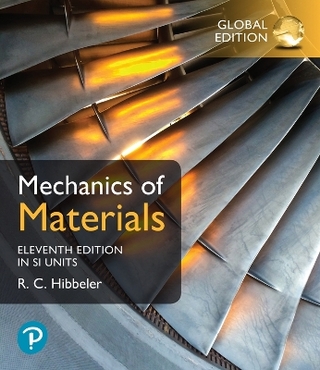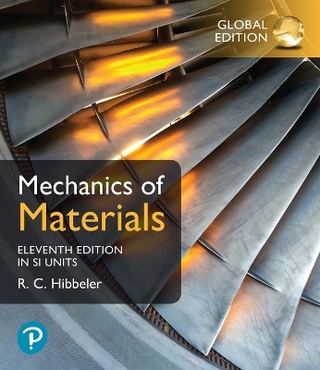
Carbon Nanotube–Polymer Composites – Manufacture, Properties, and Applications
John Wiley & Sons Inc (Hersteller)
978-1-118-08438-0 (ISBN)
- Keine Verlagsinformationen verfügbar
- Artikel merken
BRIAN P. GRADY, PHD, is the holder of the Conoco Du Pont Professorship in the School of Chemical, Biological and Materials Engineering at the University of Oklahoma, as well as the Director of the Institute for Applied Surfactant Research. Dr. Grady has been extremely active in the Society of Plastics Engineers including serving as chair of the Engineering Properties and Structure Division and later as secretary of the Society, and is currently a member of the Executive Committee of the Society of Plastics Engineers.
PREFACE ix CHAPTER 1 INTRODUCTION 1 1.1 Similarities Between Polymers and Nanotubes 1 1.2 Organization of the Book 3 1.3 Why Write This Book? 7 References 9 CHAPTER 2 CARBON NANOTUBES 11 2.1 Overview 11 2.2 Synthesis 16 2.2.1 Arc Discharge 19 2.2.2 Visible Light Vaporization 21 2.2.3 Chemical Vapor Deposition 22 2.3 Purification 25 2.4 Properties 26 2.4.1 Mechanical Properties 27 2.4.2 Electronic, Magnetic, and Thermal Properties 29 2.4.3 Optical Properties 32 2.5 Chemistry 36 2.5.1 Characterizing the Nature of Functionalization 38 2.5.2 Common Functionalization Chemistries 40 2.5.3 Polymer Covalently Bonded to Nanotubes: "Grafting From" 42 2.5.4 Polymer Covalently Bonded to Nanotubes: "Grafting To" 44 2.6 Challenges 44 References 45 CHAPTER 3 DISPERSION, ORIENTATION, AND LENGTHS OF CARBON NANOTUBES IN POLYMERS 59 3.1 Overview 59 3.2 Dispersion Characterization 66 3.2.1 Microscopy 67 3.2.2 Spectroscopy 72 3.3 Methods to Disperse Nanotubes into Low-Viscosity Liquids, Including Monomers 77 3.3.1 Mixing Protocols: Sonication and High-Shear Mixing 79 3.3.2 Dispersions of Nanotubes in Water 81 3.3.3 Dispersions of Nanotubes in Other Solvents 86 3.4 Polymer-Nanotube Dispersions: Solution Methods 88 3.4.1 Dispersion-Reaction 88 3.4.2 Dissolution-Dispersion-Precipitation 90 3.4.3 Dispersion-Dispersion-Evaporation 93 3.5 Polymer-Nanotube Dispersions: Melt Mixing 94 3.6 Polymer-Nanotube Dispersions: No Fluid Mixing 96 3.7 Polymer-Nanotube Dispersions: Impregnation/Infusion 97 3.7.1 Nanotube Fiber-Polymer Composites 97 3.7.2 Nanotube Sheet-Polymer Composites 99 3.7.3 Nanotube Forests-Polymer Composites 101 3.7.4 Nanotubes on Already Existing Fibers 101 3.8 Challenges 102 References 103 CHAPTER 4 EFFECTS OF CARBON NANOTUBES ON POLYMER PHYSICS 119 4.1 Overview 119 4.2 Amorphous Polymers 122 4.2.1 Statics: Adsorption and Chain Configuration 122 4.2.2 Dynamics: Glass Transition and Diffusion Coefficient 129 4.3 Semicrystalline Polymers 142 4.3.1 Statics: Unit Cells, Lamellae, Spherulites, and Shish-Kebabs 147 4.3.2 Rate Effects: Glass Transition, Crystal Nucleation, and Growth 169 4.4 Blends and Block Copolymers 174 4.5 Challenges 176 References 177 CHAPTER 5 MECHANICAL AND RHEOLOGICAL PROPERTIES 191 5.1 Overview 191 5.2 Rheological Properties (Measurement of Melt and Solution Properties) 200 5.2.1 Nonoscillatory Measurements 204 5.2.2 Oscillatory Measurements and the Percolation Threshold 208 5.3 Mechanical Properties (Measurement of Solid Properties) 212 5.3.1 Interfacial Shear Strength 214 5.3.2 Tensile, Compressive, and Bending Properties 216 5.3.3 Fracture Toughness and Crack Propagation 228 5.3.4 Impact Energy 230 5.3.5 Oscillatory Measurements 230 5.3.6 Other Mechanical Properties 232 5.4 Challenges 232 References 233 CHAPTER 6 ELECTRICAL PROPERTIES 249 6.1 Overview 249 6.2 Mixed Composites 252 6.2.1 Maximum or Plateau Conductivity 260 6.2.2 Broadness of Percolation Region (Critical Exponent) 264 6.2.3 Percolation Threshold 264 6.2.4 Dielectric Constant 268 6.3 Impregnated/Infused Composites 269 6.4 Composites with Electrically Conducting Polymers 271 6.5 Challenges 274 References 275 CHAPTER 7 THERMAL CONDUCTIVITY 283 7.1 Overview 283 7.2 Interfacial Resistance and Thermal Conductivity 292 7.3 Dispersion, Percolation, and Thermal Conductivity 295 7.4 Effects of Other Variables on Thermal Conductivity 296 7.5 Challenges 299 References 299 CHAPTER 8 APPLICATIONS OF POLYMER-NANOTUBE COMPOSITES 305 8.1 Overview 305 8.2 Electrical Conductivity: EMI Shielding, ESD, and Transparent Electrodes 305 8.2.1 Electromagnetic Shielding 306 8.2.2 Electrostatic Dissipation 308 8.2.3 Transparent Electrodes 310 8.2.4 Other Applications Based on Nanotube Conductivity on Polymeric Substrates 312 8.3 Thermal Properties: Flame Retardancy 312 8.4 Electromechanical Properties: Strain Sensing and Actuators 315 8.4.1 Electromechanical Actuation 316 8.4.2 Strain Sensing 318 8.5 Other Applications 320 8.6 Challenges 322 References 322 GLOSSARY 331 INDEX 337
| Verlagsort | New York |
|---|---|
| Sprache | englisch |
| Maße | 150 x 250 mm |
| Gewicht | 666 g |
| Themenwelt | Technik ► Maschinenbau |
| ISBN-10 | 1-118-08438-1 / 1118084381 |
| ISBN-13 | 978-1-118-08438-0 / 9781118084380 |
| Zustand | Neuware |
| Haben Sie eine Frage zum Produkt? |
aus dem Bereich

